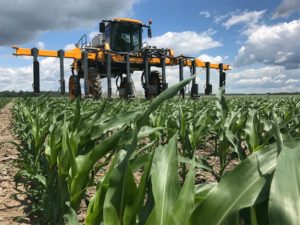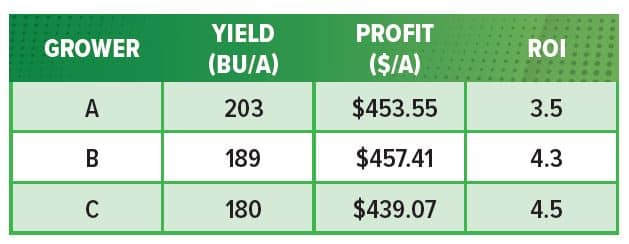 Is it time to get comfortable with lower yields? Let’s look at how to develop a fertilizer plan that maximizes returns.
Is it time to get comfortable with lower yields? Let’s look at how to develop a fertilizer plan that maximizes returns.
For years as an industry, we’ve been pushing the yield envelope.
Conventional wisdom says the way to grow an operation is to farm more acres or produce more on the acres you currently farm.
But does increased yield always equate to the best profit – of the highest ROI?
Let’s explore…
Maximizing yield – How can you get the most out of your crop? To develop a fertilizer plan to maximize yields, crops can never be hungry for nutrients. This may mean increasing your fertilizer rates and adding additional secondary or micronutrients into your fertility program. Spoon-feeding fertility throughout the season is another great way to make sure your crop has all the nutrients it needs. Foliar applications or adding other nutrients into your in-season nitrogen program have also proven beneficial.
Maximizing profit – Profit is calculated on how much money you made on a sale after all your expenses. This is probably the most widely accepted measure of your farm’s performance.
Maximizing ROI – Maximizing your ROI means how much money you made in relation to how much you invested. Since AgroLiquid is focused on crop nutrition, we are specifically looking at your fertilizer investment, but the premise of this calculation and analysis is the same for every input.
To maximize returns, every fertilizer input dollar needs to be weighed against the potential return for before making a buying decision. The generally accepted calculation for ROI is profit/cost. To maximize ROI, you should consider that at the high end of your yield potential there is likely diminishing returns on your fertilizer dollar. That’s why maximum profit might not align with maximum yield or maximum revenue.
Evaluating yield vs profit
Let’s look at an example of yield vs. profits.
For this analysis, only fertilizer costs and corn value were used in the final calculations.

Grower A achieved a top yield with 203 bu/A, and that yield is reflected in gross revenue. But they gave up some profit – which becomes apparent when you look at the return on investment.
In comparison, Grower B had a lower yield, but they improved their return and won in profit with over $457/A gained.
Grower C had the lowest yield, with good profits, and maximized their returns. For every dollar spent on fertilizer they received $4.50 in return.
While Grower B had a higher yield and profit than Grower C, he had a diminishing return on his fertilizer dollar. He gave up $0.20 per dollar spent to achieve that additional nine bushels.
Importance of ROI
Many crop decisions are made based on net profit per acre. There is some merit to that, but few farmers factor risk into their expectation of return. That means the capital invested in raising a crop is risk carried by the farm until the crop returns on the investment.
If a crop returns $100/acre, but requires that $1,000/acre be put at risk, is that better than a return of $75/acre, but only requires $500/acre be put at risk?
A case could be made for both scenarios to be right. But how much risk is involved? If spending $1,000/acre provided a guaranteed return and the $500/acre carried a large amount of risk, then a 10% return may be worth it. But risk and the amount of capital that must be put to work should be evaluated. Generally, returns in today’s economic climate run very low – often in the single digits, so it’s obviously important to manage risk. There are many risk derivatives in the market to lock in prices, but risks of crop performance still exist.
How to develop a fertilizer plan to achieve your goals
The first, most important tool to develop a fertilizer plan to maximize your returns is a good soil test.
In today’s economic environment, it’s vital to understand what the soil has – and what it doesn’t have – to make a well-thought-out fertilizer program. A trusted crop nutrition expert can help evaluate your soil test analysis and develop a targeted approach to best utilize those fertilizer dollars with your goals – whether it’s yield, profit, or ROI – in mind.
In conclusion, higher crop yields don’t always lead to the highest profits. Instead of focusing just on yield, growers can look at maximizing their ROI. By considering factors like input costs and crop value, farmers can make informed decisions to increase their profits, even if it means accepting slightly lower yields.
So to answer the question – is it time to get comfortable with lower yields? Yes, if it makes you more money in the end!
Author – Galynn Beer, National Strategy Lead
With a degree from Oklahoma University in Business Administration and Finance, Galynn began his career in investment banking. He soon returned to his roots in agriculture, and he has been with AgroLiquid for more than 25 years. He is diligent in staying connected with our farmer customers as a part of monitoring the economic climate we operate in. Galynn’s innate curiosity led him to attain an MBA from Michigan State University in 2018.

